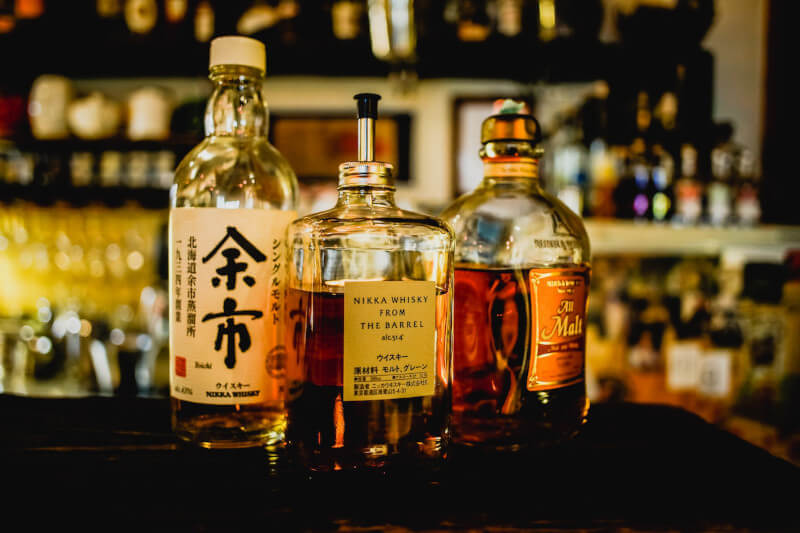If you go deep enough into the whisky market, you’ll come across a plethora of bottles labeled “Japanese Whisky.” You take a sip, enjoy it, and praise the Japanese for their artistic prowess. But what if someone told you that the whisky you were holding in your hand wasn’t Japanese? Everything is not as it seems.
Do you remember when major brands like Nikka removed statements of age from their collections, or when the Hibiki 17 and Hakushu 12 were suddenly put on the back shelf? The reason wasn’t that people throughout the world lost interest in Japanese whisky. The opposite. Japanese whisky’s popularity continues to rise, and now distilleries there are having trouble keeping up with demand.
The 1980s were a bleak time for Japan’s domestic whisky sector, resulting in lower output, closed distilleries, and a shortage of aged whisky. What would a successful company do then? It changes so that it can take advantage of loopholes in the rules.
This Mystery Revolves Around Japan’s Surprisingly Lax Whisky Laws
Current regulations allow for the labeling of mixed barrels of foreign and domestic whiskies as ‘Japanese.’ Have you ever encountered a product whose label claimed it was made in Japan but closer inspection revealed otherwise? Due to this legal loophole, even spirits that only contain about 10% whisky when blended with neutral spirits can be labeled as “Japanese whisky.”
Now for a little something different to throw at you whisky drinkers in the United States: aged rice and barley shochu, a spirit unique to Japan, can legally be marketed as ‘whisky’ in your country. The intricacy of national laws and regional brewing customs necessitates such a decision. But a purist would say that’s like calling an apple an orange because they’re both fruits.
According to Nikka’s Emiko Kaji, “The term ‘Japanese whisky’ has been stretched to its limits, creating ripples of confusion among consumers.” She emphasizes that while in Japan they can’t control overseas rules, the rise of brands capitalizing on regulatory gaps, mostly for economic benefits, is affecting the genuine whiskey market.
The issue is so rampant that Stefan Van Eycken, a Tokyo resident and an authority on Japanese whiskey, weekly fields questions about the authenticity of certain “Japanese whiskies.” He notes, “While these new entrants might be legally sound, the gray areas they operate in tarnish the legacy and ethos of authentic Japanese whiskies.”
It’s Crucial for You, as a Consumer, to Understand the Magnitude of This Phenomenon
As per HMRC data, 27 Japanese companies import bulk Scotch. SWA data suggests a staggering increase in big shipments to Japan within the last half-decade. Now, not all of it is dubious, but a sizable chunk might get the ‘Japanese’ label, even if its roots are Scottish.
Venture Whisky’s Yumi Yoshikawa doesn’t mince words when she says, “Such practices might erode the hard-earned credibility of genuine Japanese whisky brands.”
The blending of imported and domestic whiskies isn’t new. It was a well-established practice, especially during Japan’s domestic whisky boom era. But times have changed. As the global market has matured, so has the demand for transparency.
For Chichibu, a celebrated Japanese whiskey brand, the essence is clear. If a blend contains non-Japanese whiskies, it shouldn’t hide under the umbrella of “Japanese whisky.” They advocate for clearer labels.
Yet, Nikka Has a Different Angle

Nikka, one of Japan’s esteemed whisky producers, adopts a somewhat distinct stance compared to others in the industry. They believe that clearer definitions in importing countries can help categorize spirits, ensuring that ‘whisky’ and ‘shochu’ aren’t jumbled into a confusing mix.
This suggests that perhaps the answer doesn’t lie within Japan’s borders but in the regulations of importing countries.
-
Why the Emphasis on Importing Countries?
- Consumer Expectations and Standards: Nikka’s viewpoint might stem from the understanding that the global consumer largely sets the tone. When importing countries possess robust, clear definitions, it mandates exporters to meet those expectations.
- Setting Global Benchmarks: Countries like Scotland have rigorous standards for what can be labeled as Scotch. If major importers adopt stringent definitions for ‘Japanese Whisky’, it forces producers to adhere to these standards, making them globally recognized.
-
The Shochu-Whisky Overlap
- The Ambiguity: The U.S., a major importer, allows certain shochu products to be labeled as whisky. This is due to its cereal base and oak aging, even if made using koji. Nikka suggests that if countries like the U.S. separate the categories, it can significantly reduce ambiguity.
- Potential Economic Implications: By streamlining definitions, importing countries can indirectly influence market dynamics. If a premium is set for authentic Japanese whiskies, producers might be inclined to meet these criteria to tap into the lucrative market.
-
Transparency and Clarity
- Global Market Dynamics: By encouraging importing countries to adopt stricter definitions, Nikka is essentially proposing an indirect method to enforce standards without waiting for Japan’s regulatory bodies to act.
- The Power of Informed Consumers: With importing countries clarifying their definitions, consumers become more educated. A well-informed consumer base can then drive demand for authentic products, indirectly ensuring producers stay true to the traditional methods and ingredients.
-
A Catalyst for Change?
- A Domino Effect: Should major importers, like the U.S. and European countries, revise their definitions, it could trigger other countries to follow suit. This could result in a de-facto global standard, even if Japan’s internal regulations lag.
- The Role of Whisky Aficionados: Critics, reviewers, and influencers in the whisky world can play a crucial role. By educating their followers on the distinctions, they can further pressurize both producers and regulatory bodies to adopt more stringent, transparent practices.
However, creating a universal definition of ‘Japanese whisky’ is like walking on thin ice. Too many stakeholders with varying interests make the process intricate. Van Eycken isn’t very hopeful about a swift resolution. He explains, “The vested interests of many producers make it challenging to establish clear regulations.” But amid this gloom, a silver lining shines. Rumors are rife that negotiations are on, and by 2020, we might witness a well-defined framework for Japanese whisky.
For now, it rests on your shoulders. As you traverse the intricate world of whiskies, make it your mission to read those labels with an eagle’s eye. After all, in an era where authenticity battles with commercial interests, being an informed consumer is your strongest defense.

